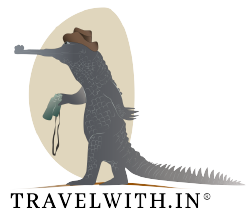Jim Corbett National Park is India’s first national park. The Park was established pre-independence and was initially called Hailey National Park. In the 1950s the Park’s name was changed officially to Jim Corbett National Park after the famous hunter turned conservationist – Jim Corbett who spent a large part of his life in the region. The Park is a 5-6 hour drive from Delhi and is known to have the highest population density of tigers in India. The Park has varied habitats and it’s location in the Himalayan foothills makes it an ideal home for several species of mammals, reptiles and birds.
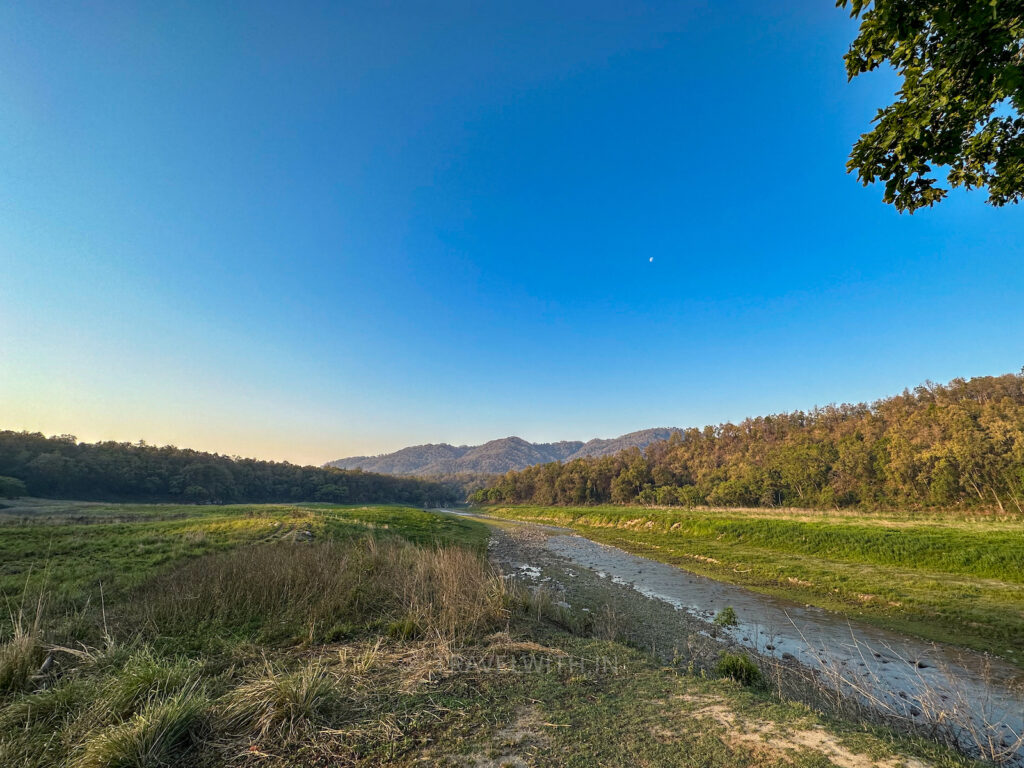
Palain River, Sonanadi Wildlife Sanctuary part of Corbett National Park
Corbett Tiger Reserve is located in the Shivalik foothills of the Himalayas. The Park is demarcated in to several zones where visitors can do day safaris and also stay for the night in forest rest houses. These zones are Dhikala, Jhirna, Bijrani, Dhela, Sonanadi (Haldhupadao), Gargia, Pakhro, Phato and Durgadevi. As a limited number of authorized gypsies (safari vehicles) are permitted each day inside the Park, getting permits in the popular zones such as Dhikala, Bijrani, Dhela and Jhirna is a challenge as they sell out very quickly. We recommend that you plan a couple of months before your travel dates if you want to visit these popular zones.
Permits for other zones such as Haldupadao, Pakhro, Phato and Durgadevi which are equally remarkable for their wildlife are easier to obtain. This is because there are few good quality hotels in these areas and hence they don’t see the influx of tourists as do other parts of the Park. Regardless of where you do a safari, permits once issued are non-refundable and non-transferable regardless of circumstance – bad weather, strike / political unrest, pandemic or sickness.
Head on with a Male Elephant
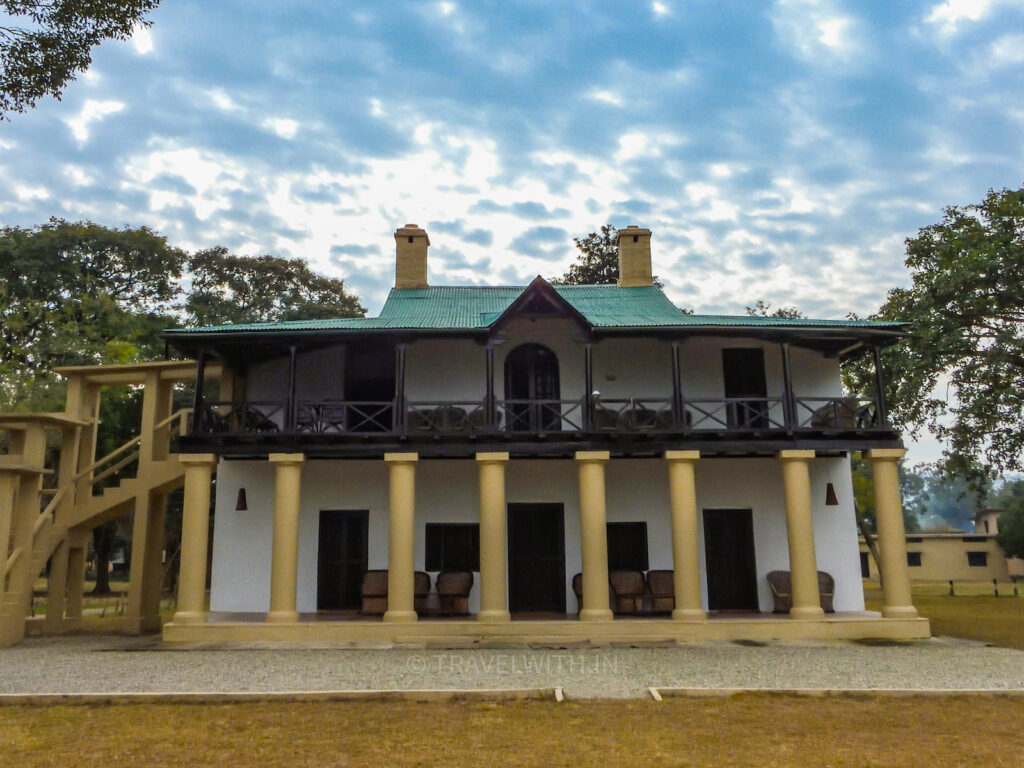
Dhikala Forest Rest House, circa 1936
Corbett Tiger Reserve is one of the few national parks in the country that provides tourists the opportunity to stay inside the core zones of the forest in government owned and operated Forest Rest Houses (FRH). Some of these FRHs are over 100 years old and were built during the days of the Raj. The FRHs in the popular zones such as Dhikala and Bijrani sell out within minutes after they’re released on the online booking portal.
However, the FRHs in the less crowded zones like Haldupadao (which is in an excellent location overlooking the Palain river) can still be booked if you’re not too good at planning holidays months in advance. The services and amenities in these FRHs are at the bare minimum, although in recent times some of them have been upgraded, namely Dhikala and Bijrani FRHs as during the safari season many VIPs also stay there. For our guests who wish to stay in one of the FRHs we try our best in making their stay as comfortable as we can. Some of the services we provide include fresh linen, blankets, towels, better quality food and beverages and an experienced naturalist for the jeep safaris.
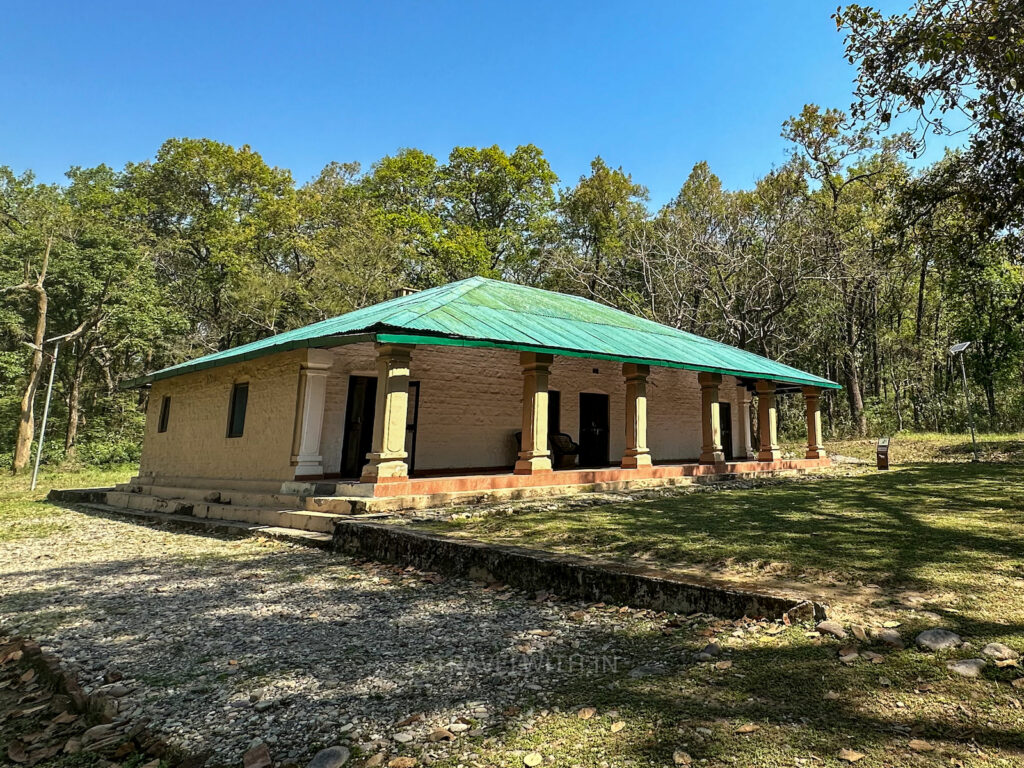
Haldupadao FRH circa 1890
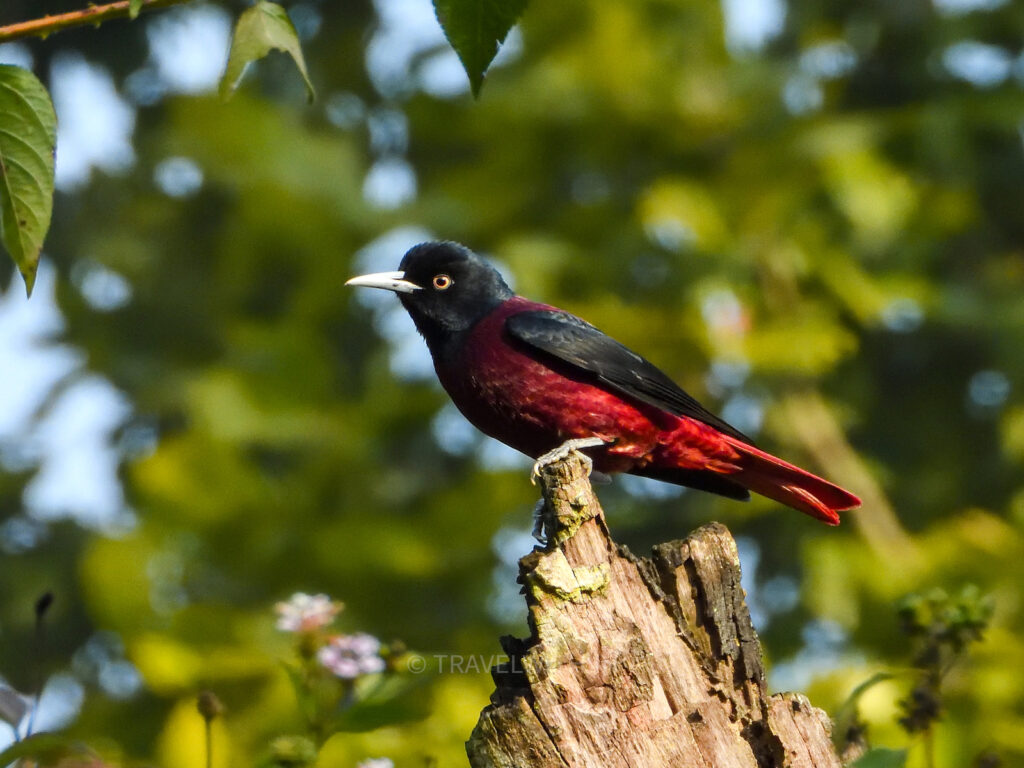
Maroon Oriole
Please keep in mind that staying inside the Park in an FRH is not by any means luxury. It is not everyone’s cup of tea as the accommodation, amenities and the food are very basic. Other factors that prevent many from staying inside the forest include power outages, no television or cell phone network, no liquor and consumption of meat allowed and an absolute ban on music and parties. Having said that, it is the closest to living inside a national park in India. No honking, no internet, no overhead wires and rampant construction – you see, hear and smell the forest in it’s true element.
If you’d like to stay in comfort with few(er) restrictions then we can arrange for you to stay in one of many luxury hotels and lodges in the periphery of the Park. When you stay outside the Park you can only do day safaris (a 3 hour safari in the morning and in the afternoon). However, many guests have started roughing it out for the experience and chose to do a combination of both. They stay for a couple of nights in an FRH and then check in to a luxury lodge/hotel so that they can have a good hot shower, get pampered by the staff and get connected with the outside world before heading back home.
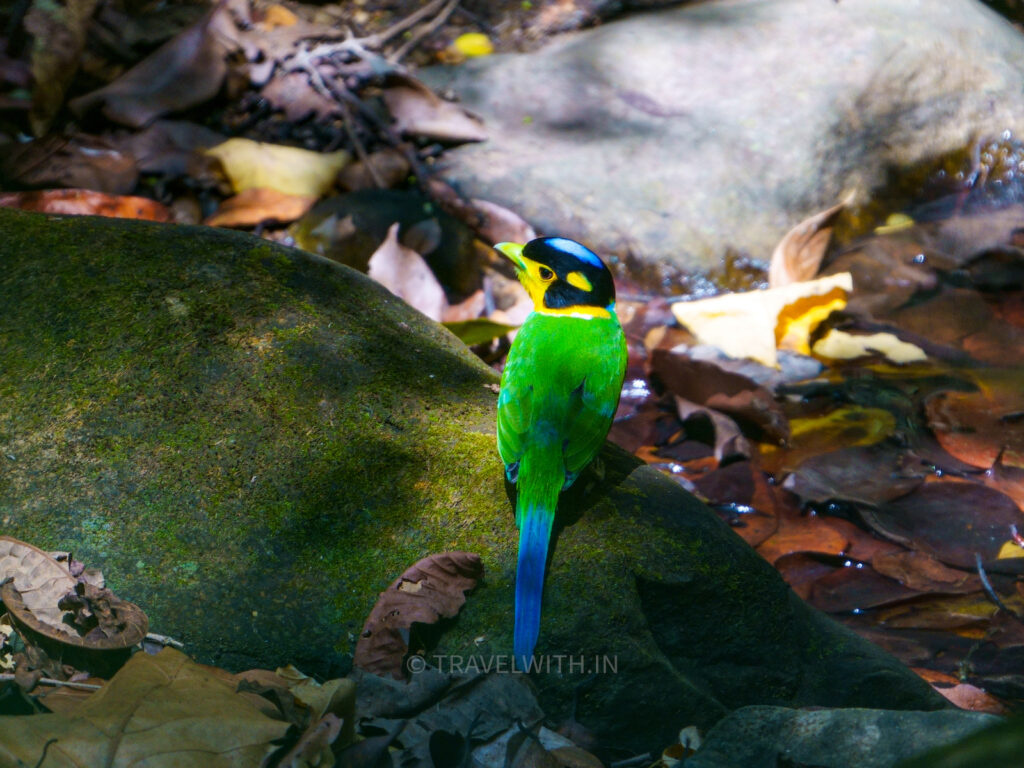
Long tailed Broadbill
Close encounter with a Blue-bearded Bee-eater
Out of the all the zones in Corbett, Dhikala is the most sought after. It is the biggest zone and the landscape and natural habitat is believed to support the highest density of tigers due to abundance in prey base. It’s expansive grasslands support herds of elephants and other herbivores including the Indian hog deer. The Ramganga river flows through the zone and is home to not only the Indian marsh crocodile but also the critically endangered Gharials and smooth coated otters. In 2019 an episode of Bear Grylls with Prime Minister Modi on Discovery Channel was filmed in the very same Dhikala zone of Corbett National Park.
Entry in to the Dhikala zone is from Dhangari gate which is 18km from Ramnagar (closest town with a train station). The zone is open for visitors from November 15 to June 15 and is closed during the monsoon season. Other zones such as Jhirna, Dhela, Bijrani etc. open earlier and close later than does Dhikala. Jhirna and Dhela are the only two zones that remain open all year round. The only time safaris in these two zones are non-operational is when it rains excessively and by order of the Forest Department. Safaris continue even if it drizzles as the vehicles have covers.
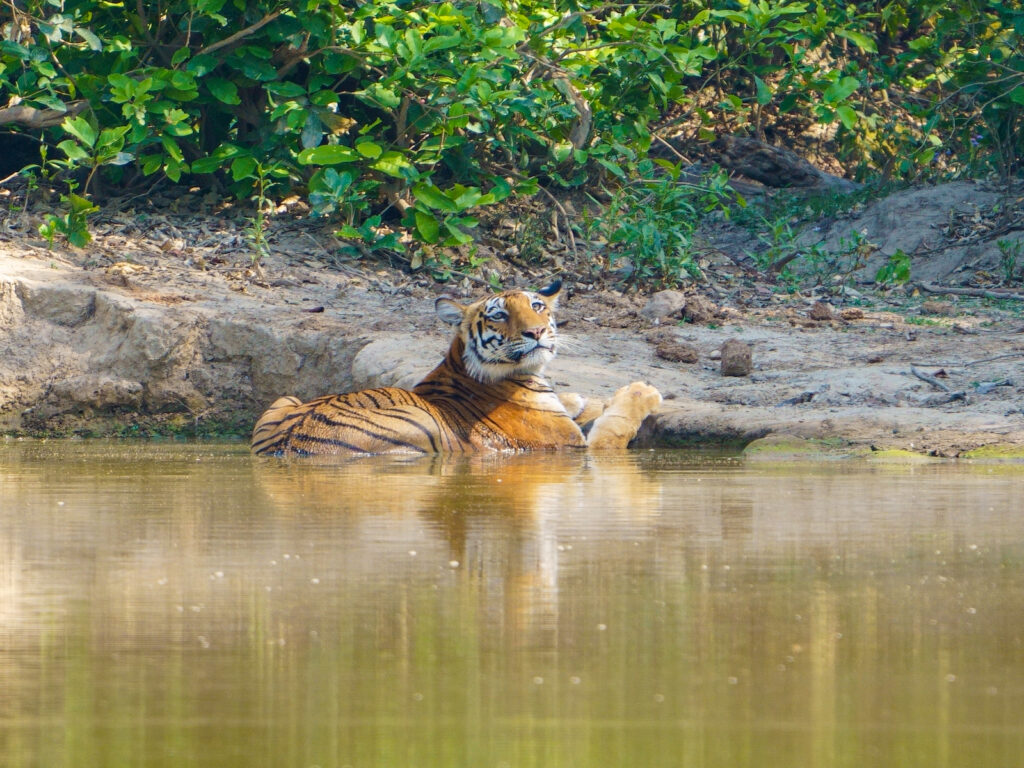
A tigress spotted in Phato buffer zone of Corbett National Park
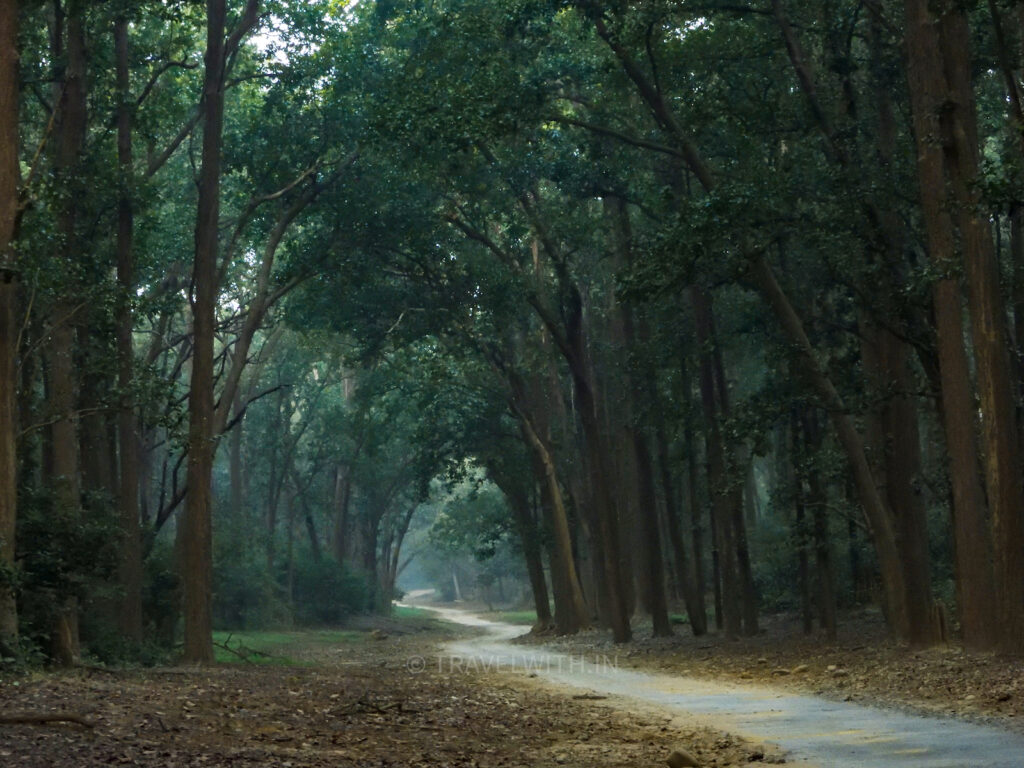
Jeep safari in Dhikala Corbett National Park
If you are visiting Corbett you should plan to stay for a minimum of three nights. Drive time from Delhi is about 5-6 hours depending on traffic and where the hotel you’re staying in is located. You can also take the train to Kathgodam or Ramnagar and a taxi can be arranged to take you to your hotel. We hear the flight from Delhi to Pantnagar airport has resumed but please check the airline’s website to see the latest flight schedule. We can arrange experienced guides and naturalists depending on your interests and budget.
Besides jungle safaris you can also visit other places of interest such as Jim Corbett’s winter home (now a museum) in Choti Haldwani. A couple of hours drive from Corbett is Nainital and Pangot which are both at 2,000+ meters amsl. Check out these links if you’re keen to combine Corbett with a visit to Pangot and Nainital.
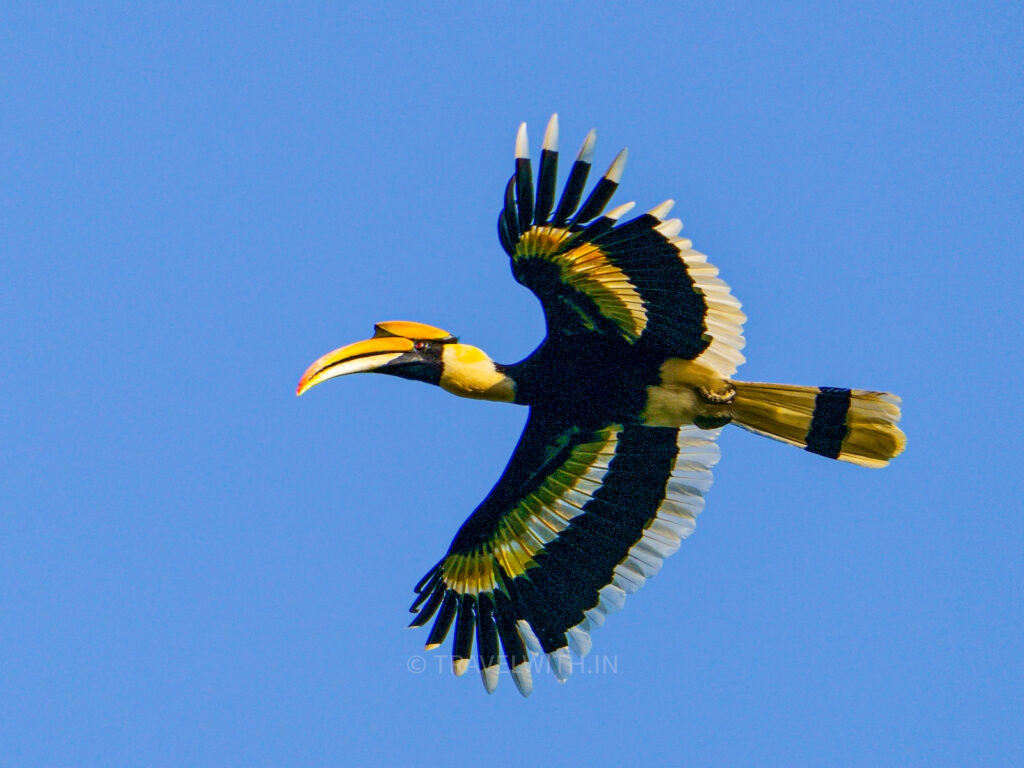
Great Indian Hornbill
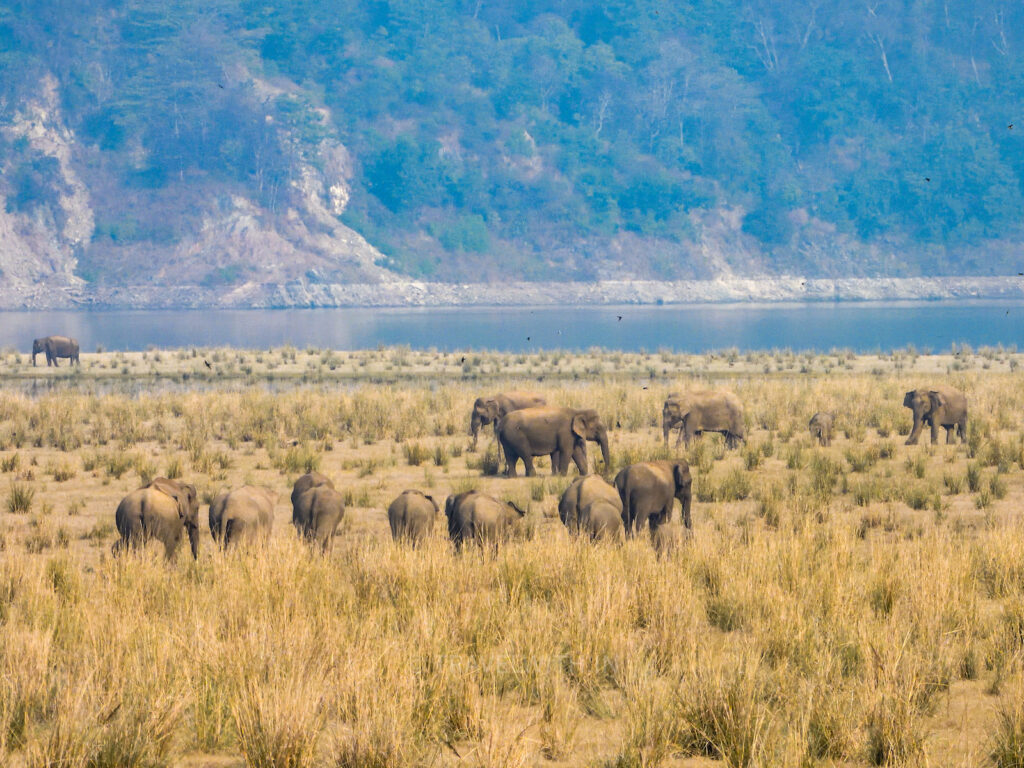
Dhikala’s grasslands
If you are an avid birdwatcher then you’re at the right spot – Corbett National Park is home to over 500 avian species that visit during various seasons. We alone have spotted 150+ species of birds in all the years that we have been visiting the Park. Our top five bird species spotted in the Corbett landscape are:
1. Great Slaty Woodpecker
2. Common Green Magpie
3. Long tailed Broadbill
4. Collared Falconet
5. Tawny Fish Owl
The Corbett landscape is great to visit all year round except may be in the peak of the monsoon season. If you’re planning to visit the Park for big cats then we recommend spring and summer (March through June), winter months are ideal for birdwatching, monsoon offers lush green landscapes, flowing rivers but outdoor activities including safaris may be restricted depending on the intensity of the rainfall.
Great Slaty Woodpecker – Jim Corbett National Park
